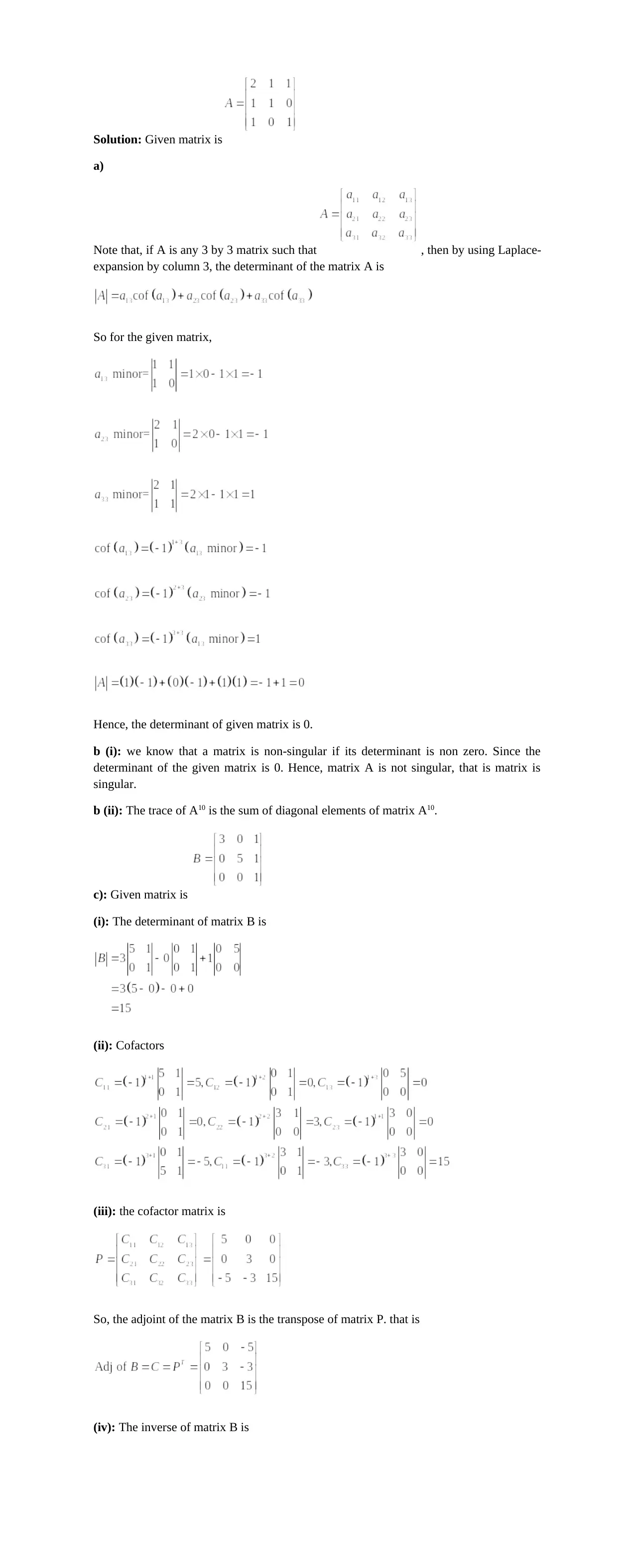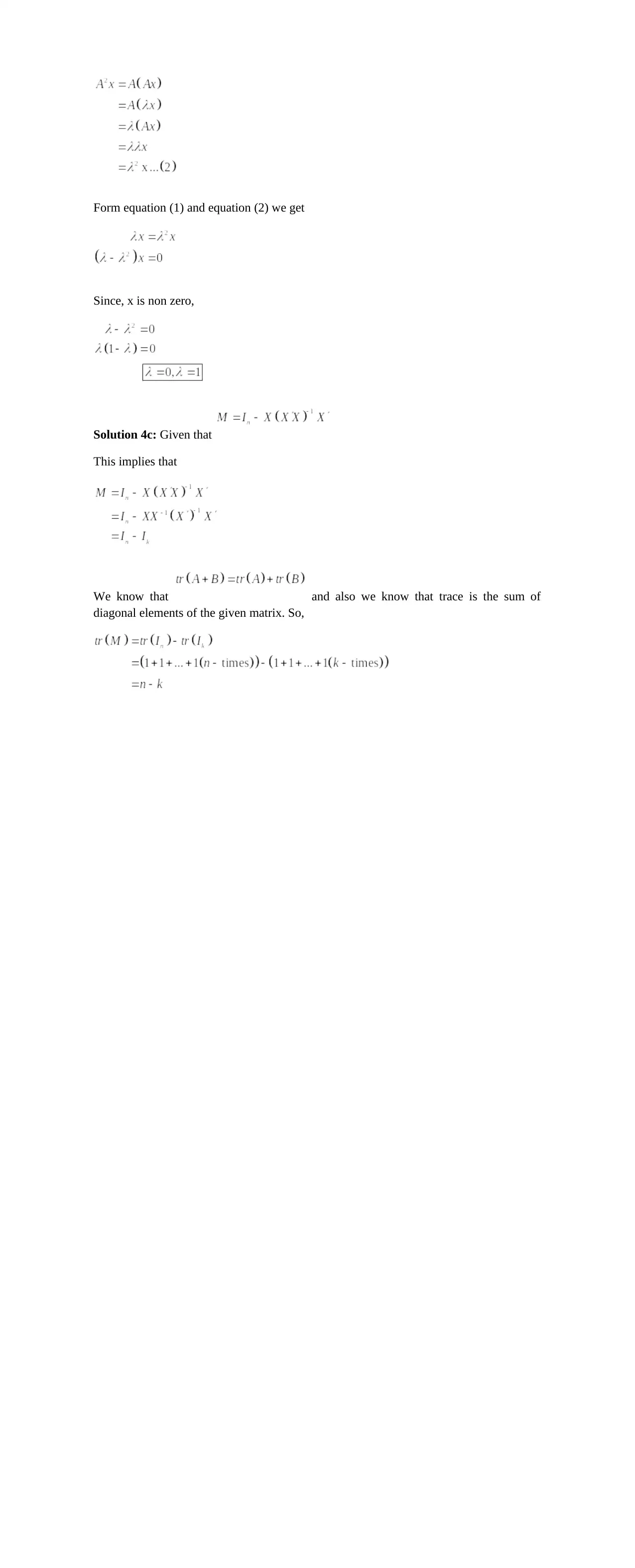Linear Algebra Homework: Matrix Determinants & Eigenvalues
VerifiedAdded on 2023/01/18
|4
|659
|47
Homework Assignment
AI Summary
This assignment solution covers a range of linear algebra concepts, including matrix determinants, non-singularity, and trace calculations. It delves into matrix operations, such as finding cofactors, adjoints, and inverses. The solution also explores eigenvalues and eigenvectors, demonstrating how to find them and prove their properties, including orthonormality and linear independence. Furthermore, it addresses the relationship between eigenvalues and the determinant of a matrix. The assignment also touches upon the properties of idempotent matrices and their eigenvalues and includes the proof of the similarity of matrices and their eigenvalues. Finally, the solution considers linear regression models, providing a comprehensive analysis of these core concepts.
1 out of 4











![[object Object]](/_next/static/media/star-bottom.7253800d.svg)